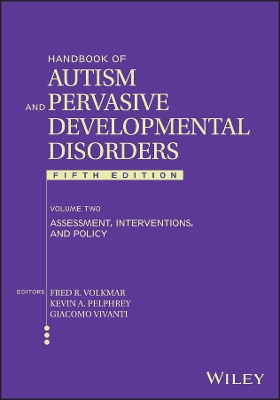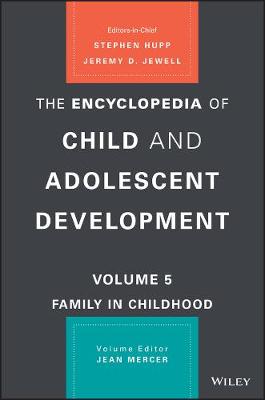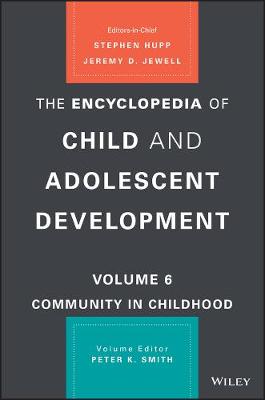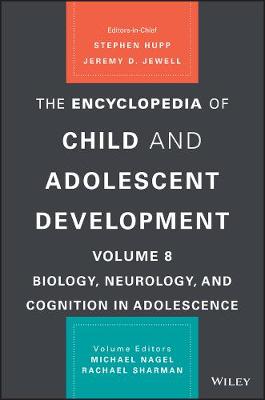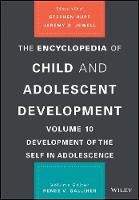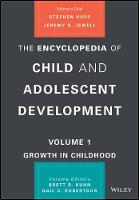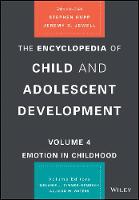Development of the Social Brain, Volume 39
 -15%
portes grátis
-15%
portes grátis
Development of the Social Brain, Volume 39
Sera, Maria D.; Elison, Jed T.
John Wiley & Sons Inc
10/2018
256
Dura
Inglês
9781119461722
15 a 20 dias
458
List of Contributors xiii
1 The Evolution and Ontogeny of Deep Social Mind and the Social Brain 1
Andrew Whiten
Introduction 1
Primate Machiavellian Intelligence and the Social Brain 3
Testing and Elaborating on the Social Brain Hypothesis 5
Primate Social Complexity and Social Cognition 8
From Machiavellian Intelligence to the Cultural Intelligence Hypothesis 9
The Cultural Intelligence Hypothesis and the Vygotskian Intelligence Hypothesis 14
The Evolution of Deep Social Mind 15
The Ontogeny of Deep Social Mind: The Life History Matrix 17
Extended Childhood 18
Neoteny 19
The Ontogenetic Development and Evolutionary Foundations of Deep Social Mind and Its Social Brain 20
Cooperation 21
Egalitarian Sharing 22
Mentalizing 25
Cultural Learning and Cumulative Culture 27
Language: Positive Feedback Between Elements of Deep Social Mind 32
Concluding Remarks 34
References 34
Part I: Animal Models of Social Brain Function
2 Neurobiology of Infant Sensitive Period for Attachment and Its Reinstatement Through Maternal Social Buffering 47
Regina M. Sullivan and Maya Opendak
Introduction 47
Neurobehavioral Assessment of Learned Maternal Cues During the Attachment Sensitive Period 53
Maternal Control Over Stress Hormones: Social Buffering 56
Changing Neurobehavioral Consequences of Social Buffering 61
Uncovering the Effects of Early-life Adversity 62
Adult Effects of Early-life Abuse Are Rescued by Infant Maternal Odor 63
Concluding Remarks 65
Acknowledgments 66
References 66
3 Marmoset Monkey Vocal Communication: Common Developmental Trajectories With Humans and Possible Mechanisms 87
Asif A. Ghazanfar, Daniel Y. Takahashi, Yisi S. Zhang, and Jeremy I. Borjon
Introduction 87
The Marmoset Monkey Model System 88
Babbling and Perinatal Influences on Vocal Output 90
Development of Vocal Turn-taking 96
Turn-taking as the Developmental System Upon Which Infant Vocalizations Are Learned 97
The Autonomic Nervous System as the Engine for Vocal Development 101
Evolutionary Origins 103
Conclusions 104
Acknowledgments 105
References 105
Part II: Higher-Order Human Social Brain Function
4 The Social Brain in Adolescence and Adulthood: Lessons in Mindreading 115
David Pollard, Stephanie Burnett Heyes, and Ian Apperly
Introduction: What Am I Thinking? 115
Reading Minds at One's Fourth Birthday Party: The Cognitive Foundations of Mentalizing 117
A Primer for the Neural Foundations of Theory of Mind 118
What the Difficulties of Adults Can Tell Us About Theory of Mind Reasoning 120
Storing and Using Someone's Mental State 121
Inferring Someone's Mental State 122
Use of Mental State Inferences to Guide Social Behavior 124
Reading Minds Like Breathing Air: "Automatic" Perspective Taking 125
Building a Theory of Mind: Functional and Neural Changes Through Childhood and Adolescence 130
Social Changes 131
Cognitive Changes 132
Neural Changes 133
Conclusion 136
References 137
5 Developmental Social Neuroscience of Morality 147
Jean Decety and Jason M. Cowell
Introduction 147
Definitional Issues and Theoretical Perspectives 150
Perception and Sensitivity to Interpersonal Harm 155
Experiencing and Perceiving Pain: The Most Basic Level 156
Early Signs of Emotional Sensitivity 158
Empathic Concern and Its Key Role in Morality 163
Implicit Sociomoral Evaluations 167
Neurodevelopmental Changes in Third-party Perception of Interpersonal Harm 172
Neurological Lesions That Impair Moral Cognition and Behavior 175
Atypical Functional and Anatomical Connectivity 176
What We Have Learned 179
Where Should Developmental Neuroscience Be Heading? 181
References 183
Part III: Summary and Future Directions
6 Development of the Social Brain: From Mechanisms to Principles 199
Ralph Adolphs and Jed T. Elison
Introduction 199
Mechanistic Features of Neural Development 203
The Social Environment: Permissive, Instructive, Enabling, and/or Buffering? 205
Causality: Partial Correlation Versus Temporal Order 208
What Are the Processes? Insights From the Varied Nature of Mentalizing 210
Domain Specificity Revisited 211
From Mechanisms to Principles 212
Acknowledgments 215
References 215
Author Index 219
Subject Index 233
List of Contributors xiii
1 The Evolution and Ontogeny of Deep Social Mind and the Social Brain 1
Andrew Whiten
Introduction 1
Primate Machiavellian Intelligence and the Social Brain 3
Testing and Elaborating on the Social Brain Hypothesis 5
Primate Social Complexity and Social Cognition 8
From Machiavellian Intelligence to the Cultural Intelligence Hypothesis 9
The Cultural Intelligence Hypothesis and the Vygotskian Intelligence Hypothesis 14
The Evolution of Deep Social Mind 15
The Ontogeny of Deep Social Mind: The Life History Matrix 17
Extended Childhood 18
Neoteny 19
The Ontogenetic Development and Evolutionary Foundations of Deep Social Mind and Its Social Brain 20
Cooperation 21
Egalitarian Sharing 22
Mentalizing 25
Cultural Learning and Cumulative Culture 27
Language: Positive Feedback Between Elements of Deep Social Mind 32
Concluding Remarks 34
References 34
Part I: Animal Models of Social Brain Function
2 Neurobiology of Infant Sensitive Period for Attachment and Its Reinstatement Through Maternal Social Buffering 47
Regina M. Sullivan and Maya Opendak
Introduction 47
Neurobehavioral Assessment of Learned Maternal Cues During the Attachment Sensitive Period 53
Maternal Control Over Stress Hormones: Social Buffering 56
Changing Neurobehavioral Consequences of Social Buffering 61
Uncovering the Effects of Early-life Adversity 62
Adult Effects of Early-life Abuse Are Rescued by Infant Maternal Odor 63
Concluding Remarks 65
Acknowledgments 66
References 66
3 Marmoset Monkey Vocal Communication: Common Developmental Trajectories With Humans and Possible Mechanisms 87
Asif A. Ghazanfar, Daniel Y. Takahashi, Yisi S. Zhang, and Jeremy I. Borjon
Introduction 87
The Marmoset Monkey Model System 88
Babbling and Perinatal Influences on Vocal Output 90
Development of Vocal Turn-taking 96
Turn-taking as the Developmental System Upon Which Infant Vocalizations Are Learned 97
The Autonomic Nervous System as the Engine for Vocal Development 101
Evolutionary Origins 103
Conclusions 104
Acknowledgments 105
References 105
Part II: Higher-Order Human Social Brain Function
4 The Social Brain in Adolescence and Adulthood: Lessons in Mindreading 115
David Pollard, Stephanie Burnett Heyes, and Ian Apperly
Introduction: What Am I Thinking? 115
Reading Minds at One's Fourth Birthday Party: The Cognitive Foundations of Mentalizing 117
A Primer for the Neural Foundations of Theory of Mind 118
What the Difficulties of Adults Can Tell Us About Theory of Mind Reasoning 120
Storing and Using Someone's Mental State 121
Inferring Someone's Mental State 122
Use of Mental State Inferences to Guide Social Behavior 124
Reading Minds Like Breathing Air: "Automatic" Perspective Taking 125
Building a Theory of Mind: Functional and Neural Changes Through Childhood and Adolescence 130
Social Changes 131
Cognitive Changes 132
Neural Changes 133
Conclusion 136
References 137
5 Developmental Social Neuroscience of Morality 147
Jean Decety and Jason M. Cowell
Introduction 147
Definitional Issues and Theoretical Perspectives 150
Perception and Sensitivity to Interpersonal Harm 155
Experiencing and Perceiving Pain: The Most Basic Level 156
Early Signs of Emotional Sensitivity 158
Empathic Concern and Its Key Role in Morality 163
Implicit Sociomoral Evaluations 167
Neurodevelopmental Changes in Third-party Perception of Interpersonal Harm 172
Neurological Lesions That Impair Moral Cognition and Behavior 175
Atypical Functional and Anatomical Connectivity 176
What We Have Learned 179
Where Should Developmental Neuroscience Be Heading? 181
References 183
Part III: Summary and Future Directions
6 Development of the Social Brain: From Mechanisms to Principles 199
Ralph Adolphs and Jed T. Elison
Introduction 199
Mechanistic Features of Neural Development 203
The Social Environment: Permissive, Instructive, Enabling, and/or Buffering? 205
Causality: Partial Correlation Versus Temporal Order 208
What Are the Processes? Insights From the Varied Nature of Mentalizing 210
Domain Specificity Revisited 211
From Mechanisms to Principles 212
Acknowledgments 215
References 215
Author Index 219
Subject Index 233

